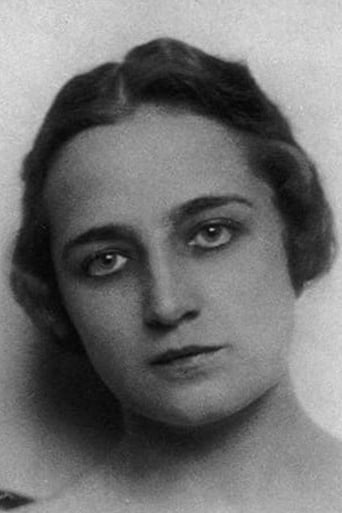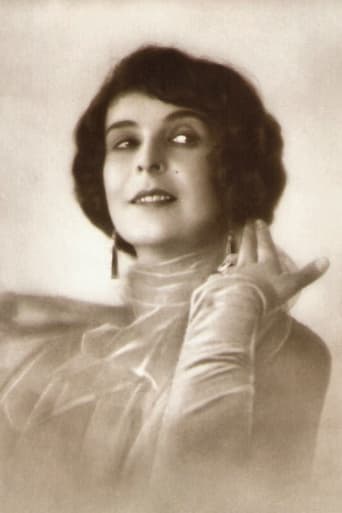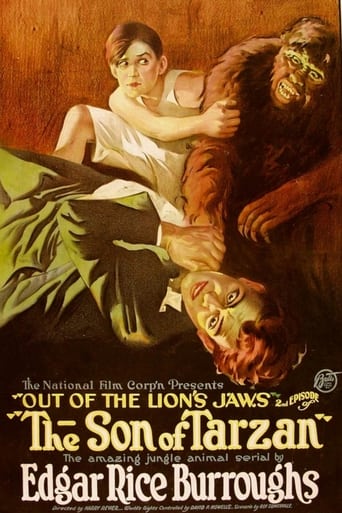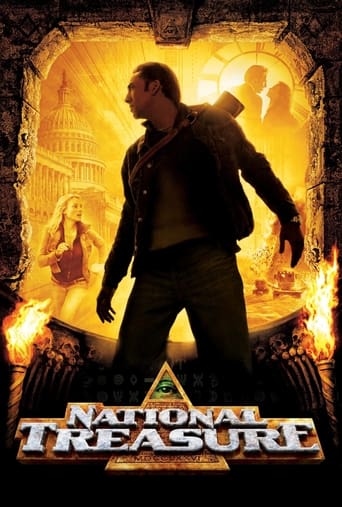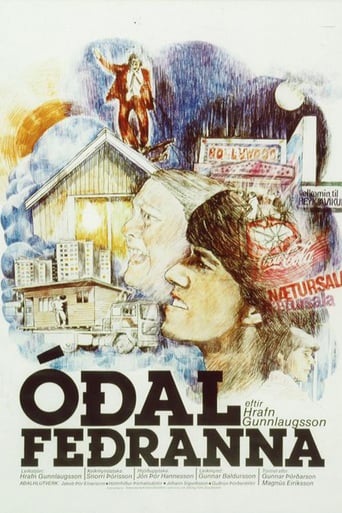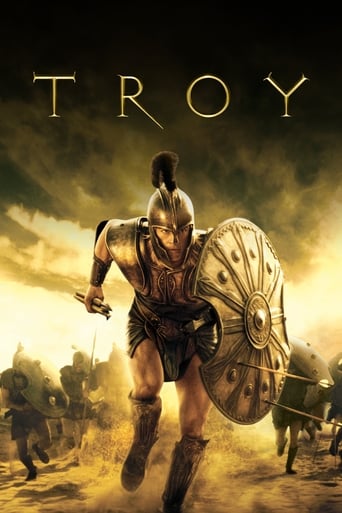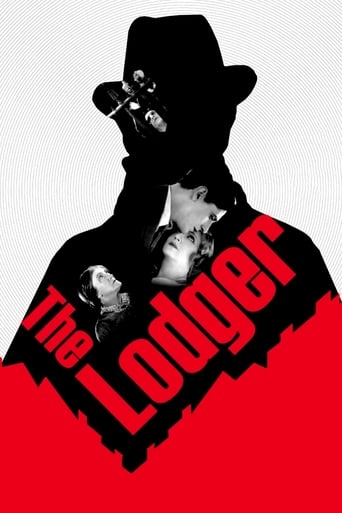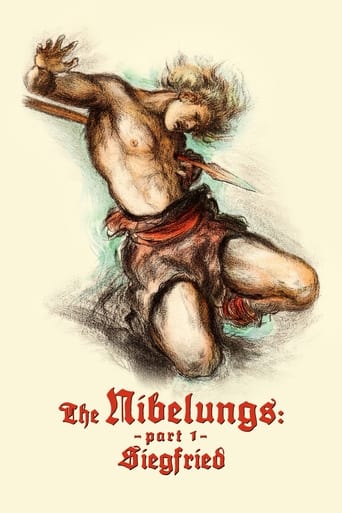

Die Nibelungen: Siegfried (1924)
Siegfried, son of King Siegmund of Xanten, travels to Worms, capital of the Burgundian kingdom, to ask King Gunther for the hand of his sister, the beautiful Kriemhild.
Watch Trailer
Cast


Similar titles
Reviews
A very beautiful film. We may wonder how Fritz Lang managed to get to that level of quality of picture but also that width of picture with the camera of the time. But he managed at least to give the impression he had wide pictures of landscape and movement, particularly galloping horses and masses of people. The film is not in black and white as expected but in gold and black and that gives it a tremendous impact since it is color without being color. It is warm whereas white and black would have been cold. That establishes a relation with the audience that is close like some story telling at night in front of some fire in the winter. We are inside the story. Another quality is the costumes. The luxurious costumes of the Nibelungen from Burgundy and the city of Worms are strikingly imposing and even forbidding. Hagen Tronje's rough costume and extravagant helmet make him look like a barbarian, violent by principle, treacherous by nature. He is the man apart that will never be betrayed by the clan, in spite of all the misery he will bring down upon them. In the same way the Huns are shown as primitive, mostly have nude, and children are shown as systematically nude, living in some kind of huts or tents, at times troglodyte caves, though at the same time they have a palace in the "city" and that palace is in a way beautiful though rather massive and heavy but quite comparable to that of the Nibelungen in Worms which is maybe vaster and more richly decorated and has a cathedral. The restoration of the film has a lot to do with the quality of the picture but all the rest is really Fritz Lang's. The question this film brings up is the motivation of Fritz Lang when he directed and produced this film. The film goes back to the traditional Germanic more than German legend of Siegfried and his wife Kriemhild. This version is not the only one in Germanic culture with some others more Scandinavian in which Siegfried is named Sigurd. This film is centered on Burgundy seen as German and the Huns in the East. This redistributing Europe to the benefit of Germany is typical of the post World War 1 atmosphere, the desire to step over the defeat. At the same time the Nibelungen are run amok because of one of their allies who is untrustworthy, and yet they stick to him. That leads to all the Nibelungen being destroyed by the vengeful will of one of them, hence some kind of a traitor, Kriemhild herself who wants to avenge the murder of her husband, though she forgets to remember she gave the killer the information he needed to succeed. She wants at least everyone to forget. And she will get her vengeance, but she will be destroyed by one surviving member of the clan. That means the defeat comes from inside because the Nibelungen were not able to respect and protect the hero they had welcomed in their clan. You see the myth behind, the lesson to the German audience: be faithful and support your heroes. Just nine years later it is this mood that will produce Hitler and the full German support to him. The Germans did not do the same mistake as in the old days. Surprisingly enough the lesson comes from a Jew, the main victims later on. The vision of the East, the Huns, Attila, is the vision of a primitive and extremely barbaric people but yet courageous and dedicated to themselves, the Huns, with waves and waves of simple people turned warriors without weapons or equipment, dying in great number but finally overwhelming the well equipped and well trained Nibelungen. True enough the killing idea came from Kriemhild: burn them all in and out, but yet it is the Huns who did it, burning down their own palace to roast the Nibelungen inside. At the same time the motivations were clear: they wanted to avenge the killing of Attila's own son by Hagen Tronje. They were justified since Hagen Tronje killed an infant out of pure spite. We can wonder if this film, a lot more popular medium than the rewriting of the myth by Wagner's operas, though Wagner could now be heard on the radio in the 1920s and 1930s, if this film did not contribute to build the atmosphere and motivation that brought Hitler to power. One thing is sure: the film is a very compelling call to the Germans to reunite and get inspiration from their mythology or past and at the same time to unite behind their heroes not to make the same mistakes again. In 1924 Hitler was still unknown but yet the momentum that was going to bring him to power was already moving and building up. This film is one piece of the puzzle. And it's probably for that reason that we had to wait so long before getting it restored to some glory. Some historical facts of the past are at times difficult to digest by modern people.Dr Jacques COULARDEAU
At the age of 34, Fritz Lang astonished the world with his grandiose silent adaptation of THE SONG OF THE NIBELUNGS, a monumental poem written around AD 1200, is extolled as the pioneer of epic cinema, divided into two parts, each comprises 7 cantos and runs over 2 hours in their integral restored versions, it is an awestruck experience to behold early cinema's most enterprising saga compounded heroism and romance with deception, jealousy, undiminished hatred and bloodletting revenge.The first part SIEGFRIED starts as a myth-abounded adventure of our hero Siegfried (Richter), who masters the art of sword-forging and is misguided to a dangerous route to win the heart of Kriemhild (Schön), the princess of Burgundy, en route he slays a dragon (a prototype puppet model looks formidable but moves too ungainly to call it as a monster) and acquires the invincibility from bathing in its blood (save for one spot, his Achilles heel); defeats Alberich (John), king of the dwarfs, takes possession of a magic net powered with invisibility and transformation, as well as the Nibelungs treasure. Sequently, a quid pro quo is achieved between Siegfried and King Gunther (Loos), Kriemhild's brother, Siegfried uses his mighty strength and the little help of his invincibility, to help Gunther conquers Brunhild (Ralph), the powerful queen of Iceland, in a threefold strength competition, and we are pleasantly to see a double-wedding, Gunther and Brunhild, Siegfried and Kriemhild. This is where the surreal side of the tale reaches its crest with Lang's groundbreaking cinematic wizardry.From then on, an inauspicious plot of Greek tragedy looms large, our hero will unwittingly succumb to his demise owing to the coalescence of a pompous queen's vengeful lie, a weak king's low self- esteem and blind enviousness, and a wide-eyed wife's inconceivable gullibility, the first half of the tale finishes with a big bang of pathos.In KRIEMHILD'S REVENGE, the fantasy element has been completely abandoned, it focuses on Kriemhild's iron-willed commitment to avenge Siegfried, she agrees to marry the Hunnish King Etzel (Klein-Rogge), and gives birth to a boy, then invites Gunther and co. to celebrate summer solstice in King Etzel's hall, meanwhile secretly plots the ultimate revenge on Hagen of Tronje (Schlettow), Gunther's adviser who personally sets up the ambush and dispatches Siegfried. In sharping contrast between Burgundian's fantastically make-believe Celtic fashion and Huns' barbarian style with grotesque garments and unsightly makeup, a tangy whiff of racial supremacy is self-evident, King Etzel is dutifully portrayed as a weakling, wailing over his infant son, but cannot fight in the front-line, a shocking contradiction to his savage appearance. The battle is elongated in spite of the multitude of Huns, Gunther and his brothers refuse to give up on Hagen in exchange of their lives, subconsciously they are all guilty for the conspiracy, they are willing to fight until the last man standing. Besieged in the king's hall, the remaining Burgundians will face their doom in a staggering conflagration, tremendous manpower has been deployed for the arduous ending, no wonder it was such a mammoth sensation when it came out!In retrospective, these two films are par excellence in its imposing production design and advanced special effect grandeur, Huppertz's guiding score is a masterwork of its own vitality, yet, the laggard pace can unfortunately hold many contemporary audience at bay, which cannot be rescued for the archaic and stilted performance, although Margarete Schön is excellent in the second part where her facial expressions fully take charge in the lengthy narrative. Among Fritz Lang's superlative filmography, a defining note is that DIE NIBELUNGEN saga opportunely prefigures his most stylish endeavour METROPOLIS (1927), and his most well-grounded masterpiece M (1931), while its own heritage should also be set in stone, even just for historical reasons.
"Die Nibelungen: Siegfried" from over 90 years ago is the first of 2 Nibelungen film directed by Fritz Lang and written by him as well with Thea von Harbou, a truly prolific and successful duo. I will not go a lot into detail about the story as it is so extremely famous. I myself have always preferred Siegfried's story about Krimhild's revenge, the second installment, in terms of Lang and also in terms of Reinl. Lang's work here is still a silent film as usual and black-and-white of course, although you could also make a case for black and gold.Lead actor Paul Richter will certainly be recognized by fans of German silent movies. And most of the other actors have played in many other films as well. But back to this one: It was the second or third time I watched it and it is still worth seeing. My favorite scene is definitely Siegfried's encounter with the dragon very early on. The dragon just looks superb and the falling-leaf scene is just too memorable. Unfortunately, the film is not packed with these extraordinary scenes from start to finish. Occasionally it drags, although it's almost an impossible achievement for a movie of 150 minutes to be edge-of-seat stuff from start to finish. This one does not succeed. However, it brings fairly decent entertainment value and a couple more scenes who are almost as memorable as the one with the dragon that I just mentioned. It is certainly not a film for everybody, but silent film lovers will probably have a good time with this one. Thumbs up.
Upon completing his epic crime film "Dr Mabuse", Fritz Lang embarked on a quest to bring Germanic legend Das Niebelungenlied to the screen. So colossal was the undertaking that it required two films, of which "Siegfried" is the first.Young heroic Siegfried kills a dragon and bathes in its blood, gaining immortality (save for a fatal weak spot). His quests make him into a powerful figure and allow him to court the beautiful princess Kriemhield. But her weakling brother only approves the lovers' union if Siegfried agrees to help him deceive the beautiful Valkyrie Brunhield into falling in love with him. When she eventually discovers this treachery, the humiliated amazon vows sets forth a cycle of revenge that will create tragedy on an epic scale.There's no way to avoid comparisons: "Die Niebelungen" is the Lord of the Rings of its day, and easily one of the most staggering epics in the history of movies. The scale, extras and the pioneering dragon-slaying scene all make for enduring cinema. Fritz Lang's alluring visuals push it even further: his awesome depiction of the rigid codes of honor that are the undoing of his characters imbues the film with a mood and atmosphere whose influences are incalculable. "Die Niebelungen" can also be read as one chooses, tribute to German heroism or to the trappings and tragedy of "honor". Hitler for one was so impressed with the film that he used an alternate edit of the film as propaganda, playing to Wagner's Niebelungen opera (which Lang actually loathed!). To be fair, though the original score can not hope to reach the mythical heights of Wagner's opera, it is still a considerable achievement.Though he would revisit the crime genre with the slick "Spies" and practically invent modern science-fiction with "Metropolis", none of Lang's silent films would reach this level of excellence. "Siegfried" of course can only fairly be judged when seen right before the second half of the saga: "Kriemhield's Revenge", in which formality makes way for chaos and petty jealousy and revenge turn to violence on a biblical scale.Anyone with even a passing interest in the silent era or film as a whole should avidly seek this out. Kino on Video have a very decent double DVD edition. I wholeheartedly recommend it.Edit (October 2010): As I add these words, Eureka have released a stellar BluRay of this saga which is just mind-blowing (reviewed by dvdbeaver, for the curious). If you've never seen this film yet, lucky you. Go straight to HD!



